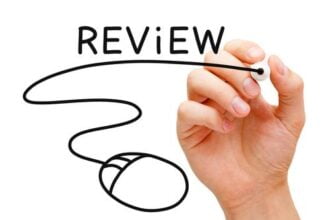In case you missed it, MedScape News Today carried an article about a new mobile stroke unit(MSU) – a large van, that comes equipped with a CT scanner, laboratory and telemedicine connection that was cutting “door to needle” time in half.Pauline Anderson wrote the article, “Mobile Stroke Unit Cuts Time To Treatment.” (I would make the title a hyperlink to the article, but you need to have a free account with MedScape to get to it.) Before I add my thoughts, let me tell you more about the equipment and the study’s results. The MSU was developed in
In case you missed it, MedScape News Today carried an article about a new mobile stroke unit(MSU) – a large van, that comes equipped with a CT scanner, laboratory and telemedicine connection that was cutting “door to needle” time in half.Pauline Anderson wrote the article, “Mobile Stroke Unit Cuts Time To Treatment.” (I would make the title a hyperlink to the article, but you need to have a free account with MedScape to get to it.) Before I add my thoughts, let me tell you more about the equipment and the study’s results. The MSU was developed in Germany and Dr. Klaus Fassbender, a neurologist at the University of the Saarland in Homburg was the study author. On board the MSU were a paramedic, a stroke physician, and neuroradiologist. If a patient was actually having a stroke, the team gave thrombolysis directly at the emergency site.
The coverage area radius for the MSU was about 15 km or just under 9.5 miles. Median times from the moment when the MSU received a call and its arrival at the scene were 12 minutes, about four minutes longer than a control group. But the MSU took only 35 minutes from first alarm to therapy decision – roughly half the time of the control group.
Dr. Fassbender said the study found advantages in timing of stroke management in both mixed urban and rural settings. He suggested that it “might be helpful in big cities with many patients but also in rural regions which are currently not covered with stroke units.”
The most important point in this whole story, other than the conclusion which I’m saving for the end, is that ”the question of whether the MSU strategy is cost-effective still needs to be addressed.”
You probably won’t find anyone in the medical community to criticize the MSU strategy because whenever you can save lives, people rarely quibble about the means or the cost.
But…I think there are some serious problems with the MSU strategy. The first and most obvious is cost. Not only are you looking at an expensive piece of equipment – a large van outfitted with a CT scanner and laboratory – but also some high-priced medical talent – a neurologist and neuroradiologist. It would be difficult for the specialists to do anything but be on standby for the MSU. So some days, they might make 5 or 6 calls and some days none. The study seems to presume there is neither a shortage of neurologists nor a high price to pay to have one on the payroll.
So you send the MSU out to a patient. What if the tests are negative? That’s good news for the patient, but in terms of use this was an unnecessary and expensive trip for the MSU team.
Even though this study was conducted in Germany, let’s look at the current situation in the United States. In areas where there is no specialty care, patients must be sent by emergency vehicle to the nearest hospital that can take care of them. Which would cost less: sending a patient to the nearest hospital via ambulance or a visit by the MSU which would probably take about the same time, but in different directions?
In locations where there are already acute care critical access hospitals, doesn’t it make more sense for a hospital to invest in the equipment to participate in a Telestroke Network rather than wait for the arrival of the MSU? Bringing the specialist to the patient removes the neurologist from a location where he can help multiple patients. In the MSU van, he can only help one person at a time. Wait a minute! What about the telemedicine connection they have in the MSU? The neurologist could use that to see other stroke patients. Well, if that’s true, what’s the purpose of the van? He could have stayed at the hospital or the office and seen the patient on the van via telemedicine and probably others as well.
For Germany, this may be a legitimate solution to caring for stroke victims, I don’t know, although you would need a fleet of them in every locality. Answering one emergency call is fine, but what happens if you get three or four calls at the same time and you only have one MSU? Do you flip a coin?
Nine to ten miles of coverage area in any direction is a lot of territory, but a tiny circle on a map. Perhaps the Germans think that each village will have an MSU, and coverage areas will overlap so when one village’s MSU is busy, the other village’s MSU responds to an emergency call. As I said, that’s a lot of expensive hardware to have on standby IF you can find that many neurologists.
What were the results of using the MSU? According to the article neurologic outcomes did not differ substantially between the 2 groups. (Oh?) At seven days, 21 patients were dead or dependent in the MSU group, compared with 20 in the control group. Three patients in the MSU group and no patients in the control group died. If this is the good news, what’s the bad!!!
Dr. Paul Sacco, chief of neurology at Jackson Memorial in Miami says more studies are needed. Really!?!? You could set up a telestroke network of remote clinics in villages without a hospital, staff them with nurses and techs, even install CT scanners in them, for about the same price as a fleet of MSUs and I’ll bet you they’d have better outcomes. Honestly, if you’re going to spend money on a study, spend it on that.







